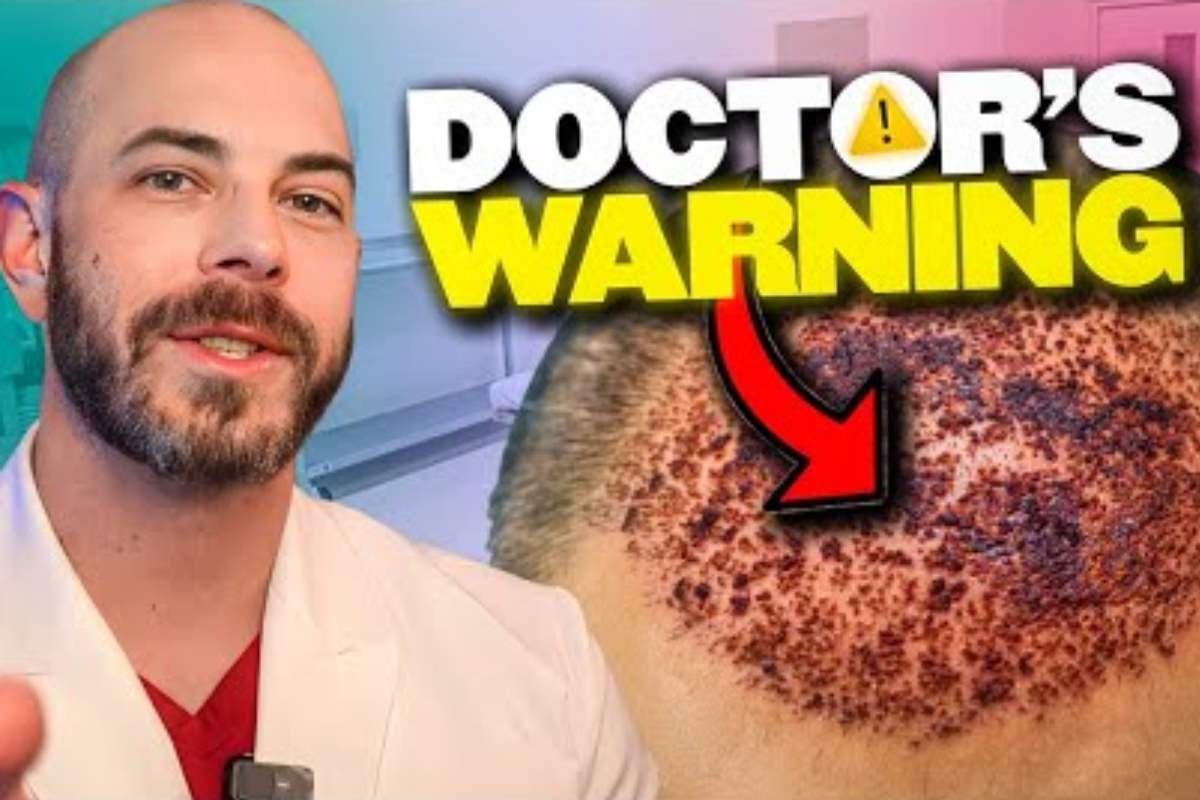As with any medical procedure, the methods in which they are performed are constantly being re-evaluated, re-tuned, and sometimes, discarded completely in favor of better, more technologically advanced ways of doing them. And hair transplant procedures are no different.
If you or someone you know considered getting a hair transplant surgery in the 1980’s or 90’s, then you have probably heard the term “hair plugs”. Sometimes the term was used to talk about the hair transplant procedure in general, and sometimes it was even used as a negative way to describe the look of someone who had received a hair transplant procedure.
It’s because of the stigma of the word hair plugs that some people often forwent a hair transplant procedure. But if those initial methods of hair transplantation weren’t created, we would not have advanced to the methods we currently have today.
Today, hair plugs are considered an outdated type of hair transplant, as well as an outdated term. Even so, for several decades they were the gold standard of hair transplantation, and pretty much the only option if you were looking for a more permanent solution to hair loss.
With advancements in technology and methods, and the introduction of new devices, hair transplant surgery has made incredible strides to help provide better results while being less invasive than ever before.
So, with that in mind, let’s take a look at what “hair plug” surgery was, compared to what the hair transplant procedures of today offer.
Difference Between Hair Plugs and Modern Hair Transplants
What Are Hair Plugs?
Though the term is still widely used outside of the medical world today, hair plugs are not the way that hair transplants would be described today. Hair plug transplants were first performed in 1950’s and were replaced by follicular unit strip surgery in the 1990’s.
The early procedure involved removing small pieces of tissue, usually with a 3-4 mm “punch tool”, to get the so-called hair plugs from the back of your head. These hair plugs contained around 20 or more hairs and were removed in rows from back of the scalp.
Once the plugs, with the hair follicles, were harvested from the donor area of your scalp, the surgeon would remove additional circular pieces of tissue from the balding area where the hair was to be transplanted, essentially creating small holes in your scalp. These circles, or slits, were slightly smaller than the hair plugs, which would allow your surgeon to insert the transplanted plugs into the holes in that area. They literally plugged the smaller hole in the front of the scalp with a bigger “plug” of skin from the back of the head. Your wounds from the transplantation would either be left to heal on their own or be stitched up as necessary.
Often this method of transplanting “plugs”, which included donor hair as well as skin and tissue, lead to a very unnatural look, which is why the term “hair plugs” sort of came with a bit of a negative connotation.
As hair transplant techniques progressed, more advanced forms of harvesting and transplantation began to emerge, which helped with a more natural look once completed.
What Are Hair Transplants?
Hair transplant is a more general term for a variety of procedure types that involve surgically moving individual hair follicles from one part of your body to another. The part of your body that you take hair from is called the “donor site.” The part of your body that is receiving the hair follicles is called the “recipient site”.
And while hair plugs are a type of hair transplant, it’s not one that is often used anymore today. Today there are much more advanced techniques, like the FUE and FUT method, which allow for a much more natural result when compared to the often “pluggy” looking results of the past.
These advancements in hair transplantation have made the hair plug technique obsolete. In fact, our own Dr. Limmer and his research team developed and perfected a technique that is now called the “Gold Standard” of hair transplantation. This technique is called Microscopically Magnified Follicular Unit Micrografting using full-thickness skin grafts.
Though it’s a mouthful, the technique is actually pretty easy to understand. It involves transplanting tiny “grafts” of one to three hair follicles from the donor site to the balding areas. A “graft” is the hair follicle, bulb and a small amount of surrounding tissue. It’s a “full-thickness skin graft” because it contains epidermis, dermis, and adipose tissue but in a very small amount, hence it is a “micrograft.”
By utilizing this technique, as opposed to transplanting “plugs” of hair, skin and tissue, the results are much more natural and heal in a way that makes the transplant surgery almost unnoticeable. It also cuts down on recovery time and discomfort.
Hair Plugs vs. Hair Transplants – Why New Hair Transplant Techniques Triumph
We’ve come a long way in the hair transplant world. There are a lot of reasons why hair transplant procedures like FUT and FUE replaced hair plugs as the new norm in the hair restoration world.
For one, hair plug transplantation involved removing a large amount tissue from the hair donor site. During a hair plug transplant, your surgeon would remove around 20 hairs per plug in a random fashion which, when transplanted, would appear extremely unnatural.
Nowadays specific “follicular units” are removed, which are the natural groupings of hair containing one to four hairs. When the larger hair plugs were removed, they left larger white circular scars, so the back of the head had a polka-dot appearance when it healed.
Even worse than bad scars, hair plugs resulted in unnatural looking hair growth. As a man’s original hairline receded further as baldness progressed, the hair plugs would still be left standing, Hair plugs in the transplant site would show as little bunches of hair sprouting out like doll hair. You would see circular groups of hair lined up in a row in the areas of hair loss. This transplanted hair didn’t blend in with the rest of your natural hair very well.
These days, hair transplantation allows for natural hair growth that seamlessly blends in with the rest of your hair. By utilizing the FUT or FUE method, the hair follicles are harvested in strip patterns or by individual units, meaning that you will no longer have a large clump of hair growing tightly together in the recipient area. Since the donor hairs were harvested to align with the natural growth of the hair, the new hairs will grow in, in similar fashion on the donor site.
Pros and Cons of Modern Hair Transplants vs. Hair Plugs
Modern Hair Transplants (FUE and FUT)
Pros:
- Natural Appearance: Modern techniques like FUE and FUT provide a natural look by transplanting individual hair follicles or small groups, blending seamlessly with existing hair.
- Minimal Scarring: FUE results in tiny, dot-like scars that are barely noticeable, while FUT leaves a thin, linear scar that can be easily concealed.
- Less Invasive: Modern procedures are less invasive, reducing recovery time and post-operative discomfort.
- Higher Success Rate: Advanced techniques have higher success rates and better hair growth outcomes.
Cons:
- Cost: Modern hair transplants can be expensive, with costs varying based on the extent of the procedure and the clinic’s reputation.
- Time-Consuming: FUE can be a time-consuming process as it involves excising and transplanting individual follicles.
- Requires Skilled Surgeon: The success of modern hair transplants heavily relies on the skill and experience of the surgeon and her team, making it essential to choose a reputable clinic.
Hair Plugs (Outdated Method)
Pros:
- Initial Solution: Hair plugs were the first method to offer a somewhat permanent solution to hair loss, providing hope to those affected.
- Established History: As an older technique, it has a long track record and was considered the best option available at the time.
Cons:
- Unnatural Look: Hair plugs often resulted in a “doll hair” appearance, with large clumps of hair growing together, making the transplant obvious.
- Scarring: The procedure left large, noticeable scars at both the donor and recipient sites, creating a “polka-dot” appearance.
- Invasive: The technique was more invasive, involving the removal of larger tissue sections and more bleeding, leading to longer recovery times and more discomfort.
- Outdated: Advances in hair transplant technology have rendered hair plugs obsolete, with modern methods offering superior results in every aspect.
“Hair Plugs” is an outdated term for a procedure that is no longer used. With a skilled surgeon there should be no risk of ending up with the “plug” look of the original hair transplants from years ago.
And while current methods of hair transplants have their pros and cons, the cons far outweigh the results you would have received with older methods.
Do I Have to Worry About Hair Plugs When Getting a Hair Transplant?
Modern day hair transplant procedures should utilize one of the methods mentioned above. FUT and FUE have both been around for a number of years now and you should not have to worry too much about your doctor utilizing the old hair plug method of transplantation.
Though, it’s important to know what questions to ask when you visit your doctor for a consultation. Knowing the basic terminology surrounding the procedures can help ensure that you are in good hands and that you know exactly what sort of surgery you are receiving.
As with most medical procedures, it’s not uncalled for to seek a second opinion. If you go in for a consultation with a hair loss specialist and you’re worried about what they are telling you, don’t feel obligated to agree to their procedures. There are a lot of clinics opening these days that are offering a variety of hair loss treatments and hair transplant options, that aren’t utilizing board certified doctors or even doctors for that matter! So it’s important to make sure that you visit a reliable and trustworthy doctor.
If you have any questions regarding hair plugs vs. hair transplants, or the FUE vs. FUT methods, we would be happy to help!
The evolution of hair transplantation has allowed for incredibly natural-looking hair growth with subtle to virtually undetectable scarring. Dr. Limmer was a key player in the development of modern hair transplant techniques. Click to learn more about our hair transplant procedure. Feel free to reach out to us if you have any questions about our technique!







